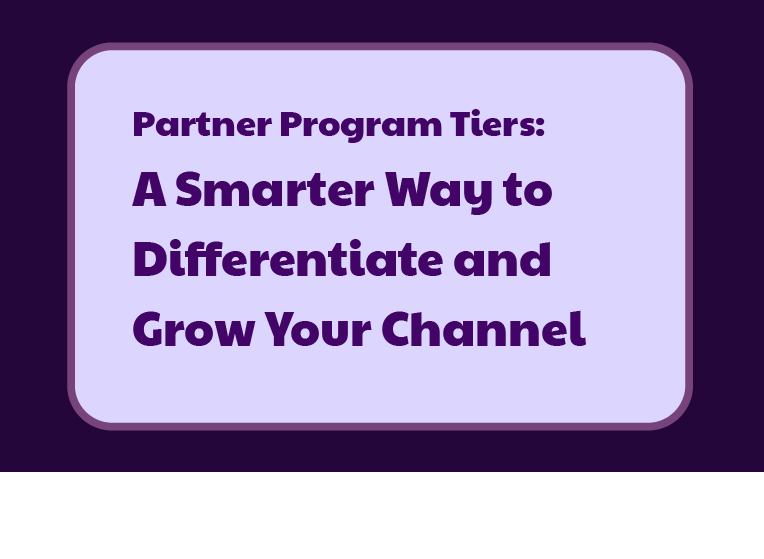If You Think You Don't Need a PRM, You Might Be Right
Discover PRM's value and challenges across partnership stages. Ready for your partner portal? Magentrix provides entry-level PRM to scale your ecosystem.

Table of Contents 📋
Table of Contents 📋
Every now and then, you’ll hear grumblings that PRMs don’t offer a whole lot of value – this conversation almost always occurs amongst those with partner programs who aren’t completely established yet and who haven't figured out how to consistently meet revenue goals sourced from partners.
This crowd usually consists of companies who have:
- A relatively young or not yet mature partner program
- They don’t yet have all the human resources or budget in place to implement and exercise their partner program to its full potential (e.g. many partners are neglected as there is nobody to tend to them and give them the level of attention they need)
- They struggle to secure the buy-in to acquire such resources or to expend more company time and effort into their partnerships department
While these organizations with less developed partner programs can still use PRMs to their advantage, they're often not yet at a stage of their partnerships efforts to experience the larger, and inevitable, challenges PRMs usually solve for.
Again, companies with less mature partner programs can definitely still benefit from a PRM in several ways, if they fit the criteria of being ready for a PRM, but it’s mature partner programs that are more likely to benefit the most from a PRM.
Those with more mature partner programs (think Stripe, Cato Networks, Palo Alto Networks, Red Hat, HPE, 3M, Amazon, Microsoft, Dell) don’t need to be convinced on the value of a PRM – they already know why it’s beneficial to have one.
Can you imagine if companies, such as Microsoft, who heavily rely on their partners didn’t have a partner portal to manage their partners? If they didn’t offer a central place for their partners to:
- Easily register deals
- Conveniently collaborate on partner initiatives,
- Or access everything they need to be able to execute on their end of the partnership?
Partnering with these organizations would become a very cumbersome process for their partners. Things would take them much longer to accomplish.
A mature partner program consisting of a larger and highly varied partner ecosystem will usually have more sophisticated needs, some of which may include:
- Marketing development funds (MDF) allocation needs
- Various types of partner training and enablement resources
- Partner self-serve options
- Partner payout requirements
- Business planning
- Rewards & gamification programs
Furthermore, if companies who heavily rely on partners, didn't have a PRM to manage all those partnerships, several challenges and inefficiencies can arise:
- Communication challenges: Without a central system, communication between a company and its many partners could become fragmented and confusing.
- Manual processes: Without automation, you’d need to manage partner-related activities manually. This is usually much more time-consuming and prone to errors – especially when there are hundreds or thousands of partners to manage.
- Complexity in onboarding: Onboarding new partners will be much harder, as there would be no centralized platform to automatically provide training, resources, and information needed for a smooth start when activating new partners. When you have a lot of partners, and different types of partners, this can become a real struggle.
- Partner training & partner enablement challenges: When there are a lot of partners to look after, it may become a hurdle for them to access marketing materials, sales collateral, and product information without a partner portal. This could lead to confusion and difficulty in effectively promoting a company's products or services.
- Reduced partner engagement: It may take partners longer to engage with you (if they seek you out at all) if they don't have a dedicated platform to easily access resources and collaborate with your company.
- Inefficient deal management: Without a structured system for lead distribution and deal registration, a company may face challenges in ensuring fair lead allocation, tracking leads, and preventing channel conflicts.
- Lost insights: A partner portal often provides analytics and reporting tools that help companies and partners understand what's working and what's not. Without these insights, optimizing marketing strategies becomes challenging.
- MDF management: If there's no dedicated system for managing MDF, it may become a struggle to allocate funds efficiently, potentially resulting in wasted MDF budget.
So if you think you don’t need a partner portal – a place that enables you and takes the headache out of the administration around managing and engaging your partners – then chances are, you don’t. Because you probably don't have those challenges yet (assess your readiness here).
Chances are: a PRM can still be very useful for you now, for use cases such as deal registration, but you probably aren’t yet at a stage to appreciate the full value of a PRM that can do so much more than just deal registration.
However, as your partner program and initiatives mature, you may begin to realize that using a disarray of note-taking apps, disconnected messages, spreadsheets to track data, shared Google Drive files, hard-to-locate documents, a CRM that can't keep track of partner records, and other communication and organizational methods or tools just won’t cut it anymore.
As your partner program and your partner ecosystem grow, the disconnection between these general-purpose tools will eventually start to take a toll on your resource availability, ability to scale, and ultimately, your partnerships' productivity.
You will need to figure out a way to connect your admin tools and any other tools you use for managing or engaging your partners. Because keeping your tasks, data and partner processes in one system can significantly offer better transparency and collaboration with your partners.
Not to mention, many of your partners will want you to have a partner portal for compliance reasons - to maintain private communications with them and have all the communications in a central location.
That’s when a PRM’s full potential can come in quite handy.
But you don’t have to wait until your partner program is mature to benefit from all the handy tools of PRM portal software.
Magentrix makes it possible for organizations with younger partner programs to start using a PRM even if they only have as few as 10 partners.
Talk to us today to learn about how our PRM Incubator package can help you scale your partner program and stay with you as your ecosystem grows.




